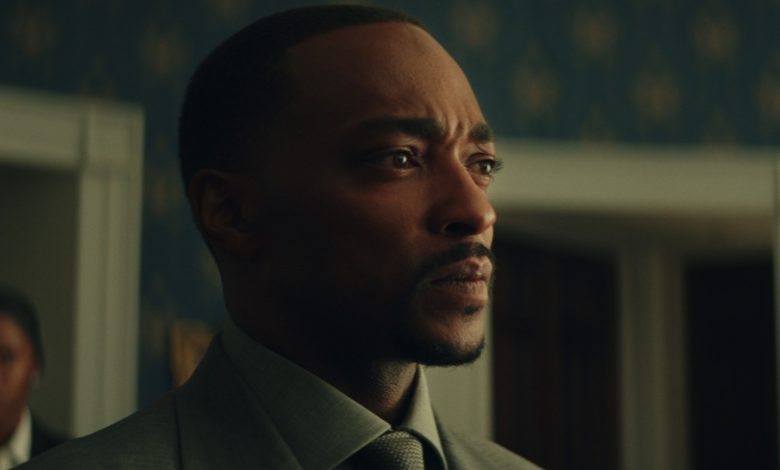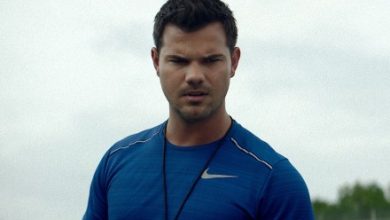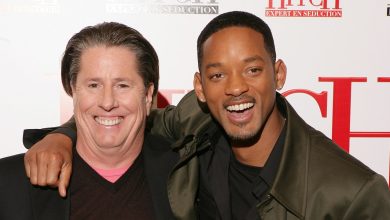Captain America: Brave New World review: a new rock bottom for Marvel

Captain America: Brave New World review: a new rock bottom for Marvel
“No blockbuster that cost this much money should look this shoddy.”
Pros
- Red Hulk is reasonably fun
Cons
- The action is a mess
- The plot is a mess
- It looks like bad TV
There’s a sequence in Captain America: Brave New World so haphazardly shot, conceived, and assembled that you can barely believe it made it into a major motion picture bound for thousands of theaters. Early into this latest thriller from Marvel Studios, Harrison Ford dodders around a cemetery, delivering tidbits of backstory meant to illuminate the motives of his character, Thaddeus “Thunderbolt” Ross, the warhawk general previously played in these movies by the late William Hurt. Except that there’s no actual cemetery — the scene has clearly been filmed on a soundstage, against a supposedly state-of-the-art digital screen that’s really the 21st-century equivalent of an old TV Western’s flimsy painted backdrops. The bright white “sky” glows unconvincingly around Ford’s head, creating a blurry halo, as though he were cropped and pasted into the frame.
This is not an isolated blunder. Brave New World is marred by regular, almost casual ineptitude — by environments as immersive as a digital golf course, by shockingly sketchy special effects, by driving scenes where the camera quivers distractingly on the dashboard. No blockbuster that cost this much should look this shoddy. We’ve seen Marvel movies paced and shot like streaming content (The Marvels leaps to mind), but this is more like the $180-million version of a bottle episode — a globe-trotting adventure that often appears to be taking place entirely within one warehouse, redressed to play indoor and outdoor locales alike.
Maybe the televisuality of Brave New World should have been expected, as it’s jumping off from a TV story — namely, the Disney+ series The Falcon and the Winter Soldier, which culminated with winged hero Sam Wilson (Anthony Mackie) accepting the shield and symbolic title conferred upon him by the previous Captain America, Steve Rogers. Those hoping, however, to completely follow what follows will also have to freshen up on the events of two less-than-rapturously regarded Marvel entries: Curiously, the story has been built around the climactic events of Eternals (at last, someone mentions the space god that rose from the ocean!) while also doubling as a belated sequel to 2008’s The Incredible Hulk, which introduced the bloviating Ross and a couple other B-listers thrown back into the fold.
Sam’s wariness to fill the boots of a living legend is mirrored by the film’s superficial similarity to another movie, Captain America: The Winter Soldier, arguably the most satisfying entry in the whole MCU project. Like his mentor, the new Captain America finds himself tangled in a geopolitical conspiracy, this one involving the attempted assassination of Ford’s military honcho, now the newly elected President of the United States. The culprit: one Isaiah Bradley, the aged, embittered super soldier introduced on the Falcon show, and played once more by Carl Lumby, TV’s first Black superhero. (He starred on M.A.N.T.I.S., a ’90s Fox series with effects not much worse than the ones we see here.) Bradley, like Sebastian Stan’s Bucky before him, has been brainwashed, and it’s up to Sam to find out by who.
The Winter Soldier echoes don’t flatter Brave New World. While that earlier movie made the Marvel juggling act of fisticuffs, banter, and franchise maintenance look easy, this new one is an awkward patchwork. Multiple reshoots of multiple drafts (the screenplay has five authors, which is way too many cooks in the kitchen) has left the story burdened with extraneous characters, like plucky Falcon in training Joaquin Torres (Danny Ramirez) and an undercard black-ops heavy played by Giancarlo Esposito, wasting his gravitas on a generic Villain of the Week. Brave New World also introduces glowering Israeli agent Sabra (Shira Haas), though she’s never identified by that name. It’s a real tight spot for Marvel— a character mired in controversy who adds very little but is in too many load-bearing scenes to excise.
Mackie doesn’t exactly carry the movie on his broad shoulders. He might have less screen time than Ford, presumably cast for his star power and the Jack Ryan associations. Previously portrayed as a token hot-headed military foil for the Avengers, Ross has been reconceived here as a tragic figure — undone by hubris and a hair-trigger temper, desperate to reconcile with the daughter (Liv Tyler) he alienated in a movie you saw years ago but have probably forgotten. It’s not a bad application of the late-career weariness Ford has put to good use in various legacy sequels. But the chintziness of Brave New World diminishes him: It’s dispiriting to see a Hollywood giant of his stature stranded in digital no man’s land, delivering stump speeches to sparse crowds from a green-screen White House.

Of course, the character goes through some… changes. Marvel let that Hulk out of the bag years ago — a pity, as it would have supplied this Captain America with at least one surprise. The mano-a-monster climax is as plagued by disastrous CGI as any other scene (what radioactive decay is causing the effects in these things to get worse?), but it still comes closer than anything else in the movie to delivering a wallop of goofy comic-book fun. Again, though, the whole marketing campaign is built around the fight, which kind of spoils the master plan our villain — plucked from the deeper recesses of this series, and played by a character actor slathered in bad makeup — spends all of Brave New World teasing.
If you squint, you can see the movie director Julius Onah might have signed on to make. His previous gig was the disquieting stage adaptation Luce — a film with no special effects but a lot of fireworks. It told the story of a teenager born in Africa, raised in America, and bristling against the pressure to be a beacon of his community, a shining example for other Black kids. That’s not so far from what Sam Wilson is grappling with around the margins of Brave New World. “If I’m not on point, I let down everyone fighting for a shot at the table,” he says during a late scene in a hospital, and it’s like something out of a whole other movie — one that might make Sam’s battle against expectation and feelings of inadequacy the focus.
Instead, Brave New World settles for sloppy spectacle. Beyond a quirky preference for overhead shots of Cap throwing his mighty shield, there’s little to distinguish the frenetically cut, poorly lit combat. Onah wouldn’t be the first director defeated by the Marvel machine, but wasn’t that machine once a little more reliable? Didn’t it churn out bigger and better fun? Disney has gummed up the works of the biggest movie franchise ever, sacrificing quality for quantity. That’s the brave new world Brave New World promises: They’re going to just keep making these things, and they’re only going to get thinner, clumsier, and less cinematic.
Captain America: Brave New World opens in theaters everywhere on Friday, February 14. For more of A.A. Dowd’s writing, visit his Authory page.



